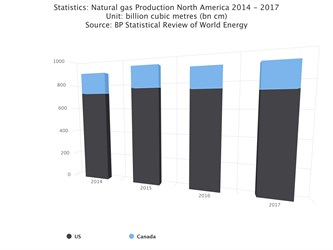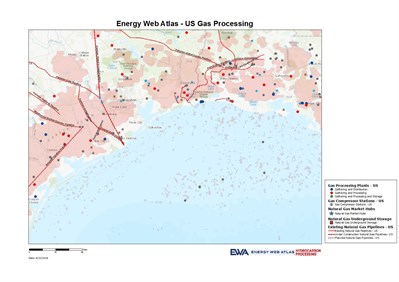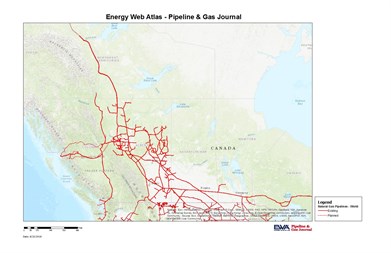Canada's ultra-cheap natural gas drives hopes of petrochemical boom
(Reuters) - Canada’s gas-rich province of Alberta is looking to recreate the building boom spreading along the U.S. Gulf Coast, where inexpensive natural gas generated billions of dollars in investment by petrochemical companies.
The adoption by drillers of fracking technology to unlock oil and gas from shale rock expanded U.S. production dramatically starting a decade ago. That abundance has generated $194 billion since 2010 in announced capital investment to build or expand U.S. chemical plants that use gas to make plastics, fertilizer and fuel, according to the American Chemistry Council.

Map Source: EWA
Alberta hopes to do the same thing, turning prices that are about one-third those at the U.S. Gulf Coast into a competitive advantage to attract petrochemical companies. Such investment would provide a badly needed market for oil and gas within the landlocked province, where energy companies struggle to reach buyers farther away.
Alberta in 2016 launched incentives to diversify its oil-based economy. Two projects, including Inter Pipeline Ltd’s planned C$3.5 billion ($2.7 billion) petrochemical plant near Edmonton, have been approved to share C$500 million in royalty credits.
Alberta solicited bids for a second subsidy round in June.
“They’re getting all kinds of expressions of interests,” David Podruzny, vice-president of business and economics at the Chemical Industry Association of Canada, said in an interview.
As attractive as cheap gas is, skeptics say Alberta’s incentives fall short of those in the U.S. Gulf, and the province also has the disadvantages of higher costs and inadequate infrastructure.

But companies are chasing opportunities even without government help.
CF Industries Holdings Inc is boosting ammonia fertilizer production by 150,000 short tons annually at its Medicine Hat, Alberta, plant starting later this year. The lower cost allows it to ship farther than usual, to farmers in the corn-growing U.S. state of Iowa.
“At times it’s free,” said Bert Frost, CF’s senior vice-president of sales, of Alberta’s gas. “We have the lowest-cost gas in the world today.”
Fertilizer producer Nutrien Ltd has begun analyzing a potential expansion in Alberta, Chief Executive Chuck Magro said. He expects the abundance of cheap gas to persist, even if the $40 billion LNG Canada terminal for liquefied natural gas is built in coming years, creating a new export outlet.
“Our analysis is you would need to build several (LNG terminals) before we would see much higher gas prices,” he said in an interview this month. “I’m quite bearish for natural gas in Western Canada for the foreseeable future.”
Methanex Corp, which makes a liquid chemical called methanol, is considering a second plant in Medicine Hat, said Paul Daoust, vice-president for North America.
Canada is the world’s fifth-largest gas producer, but much of the gas it used to sell into the Northeastern United States has been displaced by expanding U.S. supplies.
An incentive program spanning up to a decade and competitive with what is available along the U.S. Gulf Coast is necessary to offset Alberta’s higher capital costs, said Lori Kent, executive director of Resource Diversification Council.
Insufficient pipeline infrastructure is also holding the province back, said John Rogers, senior vice-president at credit ratings agency Moody’s.

Low prices have been a hardship for gas producers, and prolonged weakness could force them to reduce supplies.
“If companies are not going to make money producing gas and selling it, they’re not going to drill for it,” Shwed said.
Reporting by Rod Nickel in Winnipeg, Manitoba; Additional reporting by Julie Gordon in Vancouver; Editing by Matthew Lewis

- ExxonMobil halts 1-Bft3d blue hydrogen project in Texas
- Aramco and Yokogawa commission multiple autonomous control AI agents at Fadhili gas plant
- Ukraine will resume gas imports via Transbalkan route in November
- Mitsubishi to inject $260 MM into Brunei LNG project
- Freeport LNG (U.S.) on track to take in more natgas on Thursday after unit outage



Comments